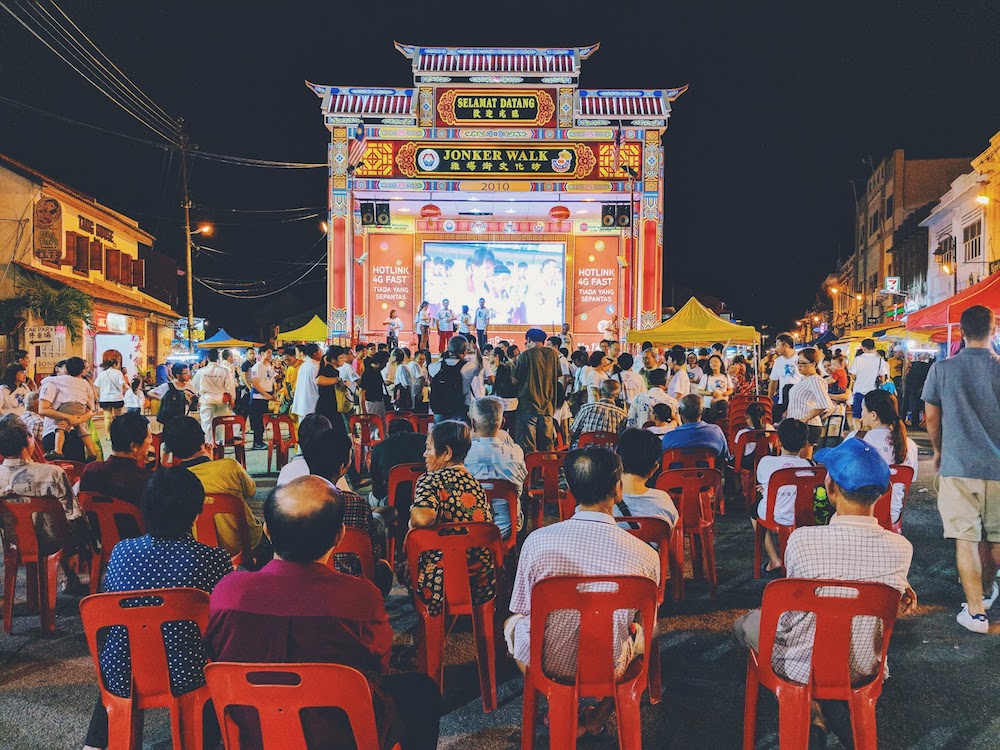Tech Tonic is our experimental foray into gadgets and gizmo content because we — like most Singaporeans — are total geeks. We look into how emerging technologies are boosting the status quo and how they’re affecting the cultural landscape of Singapore. And we also get to play with the latest toys before anyone else.
By now, the second generation of Google’s very own flagship smartphone would have been released in Singapore. If you’re reading this, then you’re at least a wee bit interested in getting the Pixel 2 XL, or maybe you already have one in your hands right now, and you want to know more about how to use it.
If you’re the latter, congratulations! You’ve decided to go with one of the most truly amazing devices available in the market right now — a phone that’s ultimately more utilitarian than snazzy (Samsung’s S8 series) or a status symbol (iPhone X). Right off the bat, I’m just going to say that it’s shitty to get locked into a shitty contract with exclusive retailers Singtel just to be able to afford the Pixel 2 XL, but two things make the hassle worthwhile: having the best camera ever slapped on a phone and being smart AF.
A few things before I go on. I can only speak of the Pixel 2 XL, and not its smaller-sized relative because only the larger version is officially available here. Unofficially, you can still get the Google Pixel 2 and the last generation of Pixels via Lazada, if you’ve got the cash.
I most definitely can’t tell you how Google’s flagship phone compares to the closest direct competition it has: the iPhone X. Which is a moot point anyway, because Apple’s latest is just playing catch-up to the rest of the world, and even I — an individual too heavily invested in the Apple ecosystem — think it’s overrated and way too expensive.
(Also, we didn’t get to test out the iPhone X because I think Apple Singapore’s marketing team still hates us for reporting about its Store’s apparent delays in opening at Orchard Road… but that’s a story for another day).
Camera Obscura
Literally, the best part about the Pixel 2 XL is in its name. Instead of standard dual-cameras, Google’s phones use a dual-pixel sensor system, with every pixel split in two to garner greater detail. Everything is done through software, so there’s no difference in camera quality between the Pixel 2 and the Pixel 2 XL.
“Because of the dual pixel sensor system and HDR+, even though they’re only microns apart, we’re able to get multiple right and left images from one camera with each shot, so when combined with a whole bunch of crazy maths we can get a depth map of the scene,” said Brian Rakowski, vice president product manager at Google.
What this means is that the Pixel 2’s single camera — infused with computational photography techniques, algorithms and good ol’ artificial intelligence — can outperform the best dual-camera phones. The depth-sensing system applies for both its rear and front cameras, and portrait shots work spectacularly on either side. I brought the Pixel 2 XL along with me to picturesque Malacca for a road-ready test, and it passed with flying, VSCO-filtered colors.





Portrait shots actually look like portraits here, which is better than what I’ve seen so far on iPhones which, more often than not, lean towards fake-looking. The Pixel 2 even lets you take a look at shots pre- and post- processing for you to see the difference.

At this point I don’t even have to bring up the fact that the phone has a record-breaking DxO mark — the top-performing mobile device camera ever tested by engineers. Then again, it’s just a technical achievement set according to industry standards, but it’s still a benchmark to compare with other phones, if phone cameras are big dealbreakers. And phone cameras are pivotal for me as a writer who’s mercilessly sent to dozens of food tastings around the island. Who else will step up to take gorgeous photos of gastronomic artistry? Can’t deprive y’all of that.


The end result of all these is picture quality that ends up as good (and can maybe outshine) regular point-and-shoot cameras. Colors pop out, the lines turn out sharp, and low-light shots are distinctly remarkable. This portrait shot of my wife in low light should show the dramatic effect of the combo.

During a demo session at the Google APAC headquarters, the marketing team simulated a dark environment via a make-shift KTV lounge, with the whole dim lighting and neon spotlights shebang. Shots taken at said “lounge” turned out to be pretty impressive, with the usual picture grain and noise disappearing after a few seconds of processing on the phone. Wish I could show you some sample pics but I truly forgot to ask them to send it over — I was too busy karaoke-ing to My Chemical Romance. Soz.
Of course, having one of the best cameras ever on a smartphone would be useless without the capacity to store the millions of photos you’ll inevitably snap. The Pixel 2 XL comes with an unlimited cloud storage of maximum-quality photos and videos taken on the phone. There’s some fine print somewhere about the offer to upload original-quality photos and videos ending by 2020 — Google informed CNET that you won’t be able to upload original-res content after that year. But you’ll still be able to save high-quality versions of your shots in the cloud though, and it’s still unlimited storage.
I didn’t have enough time to get in-depth into the Pixel 2’s video capabilities, but the strongest feature should be its fusion of optical and electronic image stabilization. Through — say it with me — AI and computing positional data through an inbuilt gyroscope, video footage will look super-steady, and will automatically remove shaky movement. Sure, it’s not gimbal-level stability of course, but it’s powerful enough to reduce annoying puke-inducing wobbles in clips.
Artificial Intelligence AF
The thing about software makers having control over their hardware is that consumers get the full experience of a device that works as a single unit. The Pixel 2 is Google’s vision of what their ideal Android device is, and all the roads that they’ve carved for the phone lead to one direction: a future with artificial intelligence. That AI needs a friendly interface of course, and that comes in the form of Google Assistant.
The localization of the search giant’s digital personal assistant has been big news, but don’t let that raise too many expectations. Google Assistant now discerns the Singaporean accent (which means you’ll no longer have to put on an exaggerated Western voice when trying to access it) and provides locally relevant information. For me personally, Google Assistant has been a huge help when it comes to checking traffic or weather conditions, launching apps, setting alarms, and answering general queries like the nearest kopitiams in my vicinity.

The Assistant’s localized context does help enormously. It recognizes local words like “Bukit Timah”, “Mee Goreng”, and odd names (like mine) without missing a beat. It makes a difference in adopting digital assistants — in two weeks, I’ve used Google Assistant more than I’ve used Siri on my iPhone for the last couple of years. Google’s tech just feels friendlier, and it didn’t make me feel an awkward automaton talking to my phone.
For me though, the killer feature is Pixel 2’s Active Edge function — just squeeze the sides of the phone to bring up Google Assistant. It’s one of those things where it’s so natural that you get into it instantly — a clever touch that made me look for any chance to use the Assistant. Especially so in these past few days; I’ll ask Google Assistant if the trains are delayed before I get up from the desk at the end of the day. It’s always listening for that “OK Google” command too (even when it’s sleeping), so you don’t have to touch anything. That especially came in handy when my hands were seeped in hoisin marinade while cooking.
There are some limitations to what Google Assistant can do, or what its version in Singapore can do at least. You can’t set Spotify (or any music player other than Google Play) as the Assistant’s default music player, so you’ll have to request something like “Play Pinegrove on Spotify”. Even then, it’ll just go to the artist page on Spotify, and it won’t play. Music commands have to be specific to work, with tunes only playing when I say something like “Play ‘Toxic’ by Britney Spears”. Below is a screengrab from the Pixel 2 review by The Verge, where it shows you’re supposed to get more options in the Google Assistant settings. These options not available on Pixel 2 XL phones here.

Then there’s the absence of the news function, which is so useful when you wake up. Google Assistant has the wonderful feature of reading out your daily briefing when you say “Good morning”. It’ll usually work by reading out the weather, the commuting conditions, and calendar schedules for the day before playing the day’s news (from various sources such as BBC or NPR). But Assistant here stops short at the news part. Google’s team, however, assured me that the feature will roll out in Singapore in the next couple of months.
Then, of course, there’s the mighty, mighty power of Google Lens. The Pixel 2 can visually recognize objects, landmarks and other details, and display all the relevant information. Taking a picture of Masjid Sultan will conjure links to more info about the mosque. A picture of chicken rice will bring up similar images of the dish, and chicken rice joints nearby. But the one that elicited the biggest reaction was taking pictures of name cards — one click on the Google Lens button and it’ll compile all the relevant details (company name, phone number, email, etc) into one neat contact detail card. Sorcery.
I’m already impressed with the Pixel 2’s AI now, but the smartphone’s smart capabilities will grow exponentially over time with each update. And the potential is really quite unnerving. Scary, even.
XL phone, XL troubles
Okay, so by what I’ve talked about so far, it sounds like the Pixel 2 XL just might be the best thing since tabbed browsing. Even so, there are quite a few — nay, several — issues that may force you to proceed with caution. It pains me to say this (because the Pixel 2 XL is just so, so good), but there’s a laundry list of issues that could be quite serious for you to think carefully before purchasing.
I’ll try to address all of them quickly in this lightning round.
Blue shift
When the screen’s off-center at any angle, a sort of cool blue tint appears. Google says that the blue shift on the Pixel 2 XL OLED is normal, and even intentional. It hasn’t bothered me at all really (the degree of blue tint varies across different phones), but it’s just something to keep in mind when you see it.
Muted colors
Despite the very nice 6-inch display, color on the Pixel 2 XL has been considered substandard. Solid hues seem splotchy, and can even look faded at times. Google has actually fixed this with a patch that addresses the muddy color issues with a Saturated color mode that can up the intensity of bright hues.
Clicking noises and high-pitched whines
Some users have reported hearing faint clicking noises coming from their phones. It doesn’t affect the performance of the device really, but it could get bothersome, and Google blames the NFC connectivity. Others have reported a high-frequency sound on handsets while making calls. Again, the issues have been solved with an update.
Permanent screen burn-in
This might be the biggest issue that’ll put you off the Pixel 2 XL for now. Multiple users noticed that the phone’s OLED screens are getting burn-in issues at the navigation portion at the bottom. And this just after a week or so of use. Typically OLED screens do decay with burn-ins eventually. But in a span of several days? Yeesh, not good.
That’s some pretty wild OLED burn-in on the Pixel 2 XL after maybe 7 days of full-time use pic.twitter.com/EPJTs6D0Kg
— Alex Dobie (@alexdobie) October 22, 2017
Obviously, this is pretty serious, but not a widespread issue, according to Google. Yes, again, a software update has been sent out to bring UI changes that’ll help to “extend the life of the OLED display”. That’s nice, but only time will tell if the screen decay will set in faster than the screens of other phones.
The bottom line
![]()
Pixel 2 XL is superb, but it’s in no way at all perfect. It’s a solid workhorse that’ll make life much easier for work and leisure, and it’s the best Android phone anyone can buy — but I cannot guarantee its long life in your pocket.
There are also other minor, subjective caveats, like the lack of wireless charging, the lack of a completely bezel-less design, and (UGH) the lack of a headphone jack. Even purchasing this amazing phone in Singapore has its limitations — you’ll have to endure being under contract with SingTel; and you can’t claim a free Google Home Mini alongside your Pixel 2 XL purchase here. Those with tinier palms can’t purchase the smaller version.
But! As a future-proof smartphone that does all the things you want on a mobile device, the Pixel 2 XL, er, excels, and more. Considering that Android users outnumber iOS devotees in Singapore, Google made the right choice to finally launch the flagship phone here to offer the purest, most joyous experience available for anyone unwilling to bend their will to Apple.





Reader Interactions